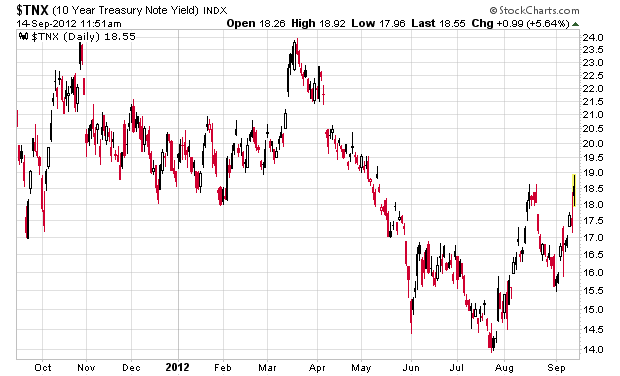Finance is a very funny industry. The primary way of keeping score, change in cash, is not really used as a performance measure. Instead, the performance measure is return on investment, which is a proxy for change in cash, but not the same. Return on investment is a flawed metric because it does not take into account risk.
A clever formula to weighing historical risk and performance is the Sharpe Ratio, but I will leave that mathematical dissection (and the weakness of the Sharpe Ratio) for another post.
If I told you that I made 2% this year, an observer in an “up” market environment would say that is a horrible return on investment and bad performance. If I then said that my portfolio was 100% cash, then the performance would be fantastic. You might chide the decision to be all-cash in an up market environment (missing the wave) but at least the performance in the constraints of a 100% cash portfolio was great (given that the most you can do these days is less).
However, if you wanted to juice your performance, the drug of choice in the finance industry is leverage. And in today’s interest rate environment, the rate on leverage is cheap. Even retail investors can get into the action by loaning money from Interactive Brokers (depending on how much money you actually borrow – the first US$100,000 is at 1.65%, the next US$900,000 is at 1.15% and the next US$2,000,000 is at 0.65% and everything above that is at 0.5%).
Assume you get a 1% borrowing rate, which makes the arithmetic easy. So if you manage to earn a 2% average on cash, why not borrow cash at 1% to invest it at 2%? So I will set up a mutual fund. All I will do is invest at a risk-free rate of 2%, and apply some leverage. I invest $100 in my own fund, but borrow $900 at 1%. What happens financially?
Interest income: $20
Interest expense: $9
Net income: $11
Return on investment: ($11 net income / $100 equity investment) = 11%!
So I have magically transformed what was a 2% return into a 11% return with the magic of leverage. Using this technique, and unlimited borrowing power, I can generate any return on investment you desire. Want 101%? Easy – borrow $10,000 instead.
This concept is introduced in introductory level finance courses across the world, but most people fail to appreciate how the rate of return figure that is being advertised in a lot of cases is simply a synthetic return. The use of leverage creates this return. Parenthetically, a similar way of generating “synthetic yield” was used in the mid-2000’s when income trusts were raising equity capital and just giving back cash to unitholders as a return of capital to generate false yield when they weren’t really making any money to justify their distributions.
Where do you see synthetic performance currently occurring? Mostly in the US financial REIT markets like Annaly (NYSE: NLY) and others. They borrow money for cheap, invest them in mortgage-backed securities, and then skim the spread. They goose their performance with leverage.
While this is a valid way of making money, the danger is on the reliability of returns – even if the asset you are investing in inevitably gives out the desired return (both of interest and principal), if the asset value itself has severe variations, funds will be forced to liquidate such securities for losses because they will have lost borrowing power. If you have enough capital being driven into these financial structures and they keep leveraging the capital to generate high returns, there will be some blowups along the way simply because the asset pool they are investing in will be well above true vale. One blowup will likely cause others to blowup since they are essentially invested in correlated products.
Yield-chasers are going to get crushed. I am not sure when this will occur, but the current trend toward yield chasing is crystal clear. I’m not going to be shorting such securities presently since I think the momentum still has quite some way to go, but when this insatiable risk reaches some sort of crescendo, that would probably be a good time to sell everything and wait for a 2008-style crash in asset values. Maybe in 2013 or 2014?


